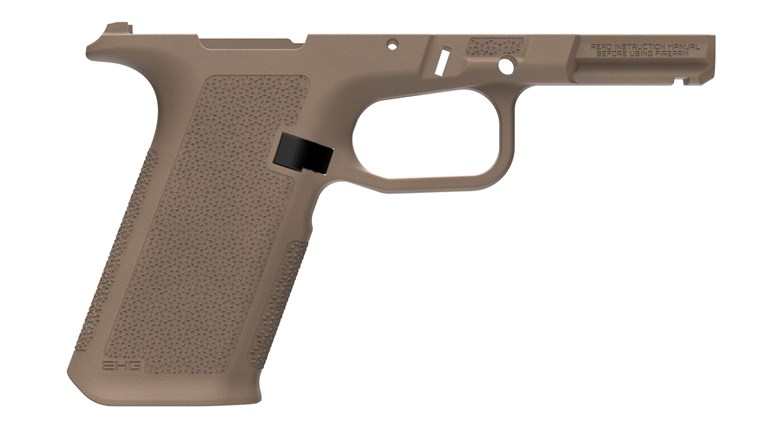
Once cases are properly sized and belled the next step is priming. It’s a simple operation. But if military surplus cases are in the mix (whether rifle or pistol) an additional step is required.
Military cases normally use a crimped-in primer, and that crimp must be removed or a new primer will not seat. RCBS makes a simple and inexpensive primer pocket swaging tool to deal with this.

There are a number of priming tools that will mount on a single-stage press. But I find that off-press priming is actually faster with the “batch” method. It’s more convenient to get the case in and out, and inspect it for proper seating.
There are a number of off-press priming tools. Some are squeeze-type hand primers that run in the $35 to $175 range. They work well, but can be a bit fatiguing—especially with some of the harder primers that require more “squeeze force.”

Bench-mounted units will run from $25 to over $100. They do need to be firmly mounted, but it doesn’t have to be a permanent mount. With my Lee Auto Bench Prime (around $25 online, with caliber specific shell holders around $5 each) I drilled mounting holes into my reloading bench and bought some over length screws and wingnuts. That lets me install and remove it as needed. It’s quick, non-fatiguing and I can prime about 400 cases per hour.
The separate sizing, belling and priming operations don’t have to be a continuous evolution. Common 28-ounce plastic coffee cans are airtight, make excellent storage containers, and they’re easily labeled as to the contents. A couple of hours here and there can easily fill one with 1,000 (or more) sized, or belled or primed cases. When the primed case can gets filled, it takes little time to crank out a few hundred rounds for next weekend’s match.

Powder charging is the next step, and that needs to be immediately followed by seating the bullet.
There are two types of powder charging tools—adjustable and fixed rotor. Adjustable powder measures, whether manual ($85 and up) or electric ($350 to $900), allow the shooter to adjust the measure to the desired powder charge. They can be effective when properly adjusted.
Fixed-rotor measures use marked interchangeable rotors with different volumes. The exact charge for each rotor will vary with different powders due to density. But once the charge for each rotor is determined they never go out of adjustment. If a shooter wants to fine-tune a load that is not thrown by a rotor, it’s a simple matter to take a rotor that’s slightly below the desired weight and open it up with a drill to get the specific charge desired.
Many powder charging systems can be mounted directly to the press—drop the charge and then seat the bullet. The drawback is verifying the charge. A missed or double charge can be a problem. My solution with single-stage press use is the same “batch processing” method I use to prep cases. With my RCBS Little Dandy powder measure I use loading blocks (available from many sources). It takes me 10 minutes to fill two 50-case blocks and charge them. A quick pass over the cases with a small flashlight will show a missed charge or double charge. After that, it’s easy to run them through the press and seat the bullets. With a taper crimp there’s one more pass through the press, but it doesn’t take long. With pre-prepped cases, I can crank out enough rounds for the next match in an hour.
The RCBS Little Dandy is designed for the small powder charges used for handguns. The larger powder charge required for rifle cartridges is best addressed with an adjustable measure such as the RCBS Uniflow. This can still be done off-press with an available powder measure stand. Double charges are obvious because they’ll overflow the case. Missed charges are equally obvious with a look into the case. Once confirmed, the bullet can be seated.
With either charging system, a scale is mandatory to confirm the exact charge weight being adjusted to, or thrown by a fixed rotor. Electric scales will run $140 to over $800. A simple magnetic balance beam scale will serve well and can be purchased for around $50 to $75.

Finally, no new reloader should start without a reloading manual, like those from Speer, Lyman, Hornady and others. They do show load data, but that data is also available on every powder maker’s website. The biggest plus for the reloading manuals is that they provide an illustrated step-by-step guide through the reloading process. They can quickly turn a novice into a safe and competent reloader.
A new reloader opting for a single-stage press, off-press priming tool, either type of powder charger, an inexpensive tumbler, magnetic beam scale and some of the minor accessories mentioned above can—with careful online shopping—assemble an effective reloading kit for under $700.
The first 1,000 rounds loaded will pay for the reloading gear. After that, they can expect to reload practice and match handgun rounds for less than $12 per box of 50, while rifle rounds will run a bit more. But it’s still less than factory ammunition. And when properly assembled, it’s just as good. It really doesn’t take big bucks to save big on ammunition.
Read more: Remington Ammunition Returns: Revitalized Operations at Arkansas Plant



































